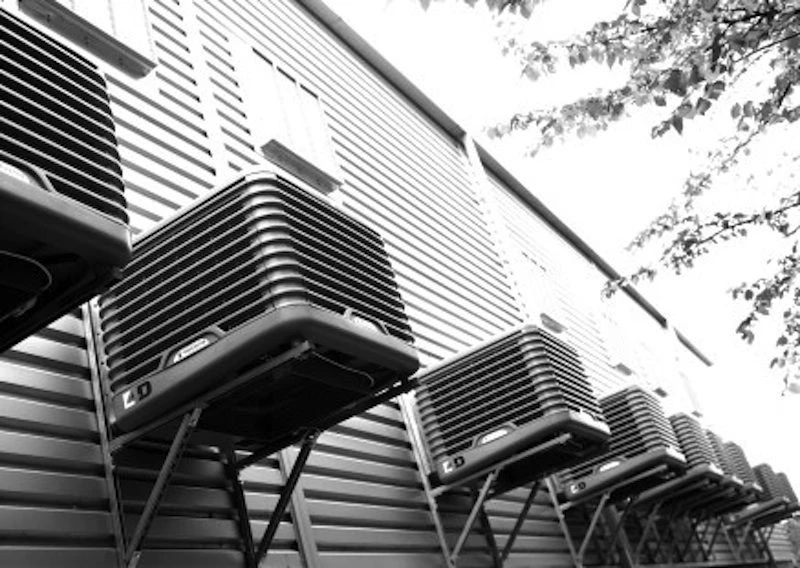
Partner Article
Green adaptation case study: 4D Data Centres
It’s environment focus week on Bdaily, and we are looking at what the low-carbon economy really means for UK SMEs. Here 4D Data Centres presents its case study on adapting its business to reduce its carbon footprint.
Current estimates suggest that about 1% of the energy consumed by the entire world each year, and 5% of Europe’s annual energy bill, is spent just on cooling computers! Data storage is second only to the airline industry in terms of the size of its carbon footprint.
4D Data Centres runs one of the few independently owned data centre businesses in the UK. Based at its own flagship site in Surrey, it also provides colocation and connectivity services in three other centres in The City, London Docklands and Kent. The company is serious about reducing its carbon footprint from both an environmental and economic point of view. With this in mind the company pioneered CO2 reduction techniques for the IT Industry in 2011. This was officially recognised in May 2012 when it won the Green Datacentre Project of the Year Award from Datacentre Solutions magazine.
How it works
In November 2011, 18 eco cooling units were installed at the Byfleet data centre, 4D Surrey.
This new evaporative cooling technology (sometimes referred to as adiabatic cooling) works on the simple principle that when water evaporates it draws energy and heat away with it. Just in the same way people sweat when hot to cool down, this technology draws warm ambient air through a wetted filter which in turn causes some of the water to evaporate and cool the ambient air down.
It’s therefore a completely natural way of producing refreshing cool air at exactly the right temperature and with a much reduced carbon footprint.
It is in good company; Facebook and Google have launched similar systems with great success but 4D Data Centres is one of the first to do so in the UK.
The new units are also the only evaporative coolers designed specifically to take into account European health and safety regulations.
Benefits
These are the benefits as a result of the new coolers:
- Decreased energy usage of 88% on current cooling load
- Reduced carbon footprint for existing clients. Estimated saving of 440,605 Kg of CO2 per year
- Better cooling performance on hot days than traditional CRAC units
- Reduced PUE. 4D Surrey’s PUE (Power Usage Effectiveness) is 1.14. A PUE score of around 2 for a data centre would be considered ‘average’, while a PUE of 1.5 is deemed ‘efficient’ and anything below this is difficult to achieve. Just a few facilities are now operating at 1.1 – 1.4 by using very efficient cooling.
Other green initiatives at 4D Surrey include:
- Cold aisle containment
- Fresh-air and adiabatic cooling of UPS and switchgear room
- Blanking plates and floor grommets in all racks
- High intensity LED tube lighting throughout the building
- PIR-activated lighting in halls and walkways
- Recycling service for customers’ hardware packaging.
Here are some other environment focus articles that may be of interest to you: carbon reporting in logistics firms; what are the benefits of electric vehicles?; we talk to a print business about why SMEs need to go green; find out how one innovative business is using ozone as a cleaning tool; what does sustainability really mean to your business?; and funding support for green businesses.
This was posted in Bdaily's Members' News section by 4D Data Centres .
Enjoy the read? Get Bdaily delivered.
Sign up to receive our popular morning National email for free.








 Apprenticeships: Lower standards risk safety
Apprenticeships: Lower standards risk safety
 Keeping it reel: Creating video in an authenticity era
Keeping it reel: Creating video in an authenticity era
 Budget: Creating a more vibrant market economy
Budget: Creating a more vibrant market economy
 Celebrating excellence and community support
Celebrating excellence and community support
 The value of nurturing homegrown innovation
The value of nurturing homegrown innovation
 A dynamic, fair and innovative economy
A dynamic, fair and innovative economy
 Navigating the property investment market
Navigating the property investment market
 Have stock markets peaked? Tune out the noise
Have stock markets peaked? Tune out the noise
 Will the Employment Rights Bill cost too much?
Will the Employment Rights Bill cost too much?
 A game-changing move for digital-first innovators
A game-changing move for digital-first innovators
 Confidence the missing ingredient for growth
Confidence the missing ingredient for growth
 Global event supercharges North East screen sector
Global event supercharges North East screen sector